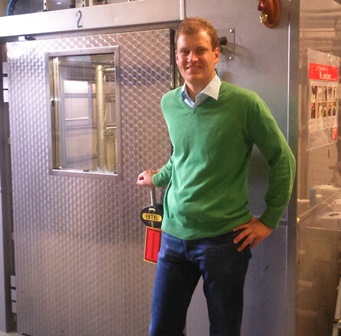 Large-scale methane measurements on individual ruminants for genetic evaluations
Large-scale methane measurements on individual ruminants for genetic evaluations
STSM: The use of indirect calorimetry for prediction of methane emissions from ruminants
My name is Georg Terler and I am a researcher and PhD student at Austrian Research and Education Center (AREC) Raumberg-Gumpenstein, Austria. The field I am researching in is livestock production, reaching from the production of feed for animals till the quality of food of animal origin. In future one main topic of my work will be environmental aspects of cattle production with focus on methane emissions.In the last years the contribution of ruminants to global warming has become an important topic in Austria, like in many other developed countries. Hence the development of methods to reduce methane emissions from ruminants is of big interest. One method to measure methane production of cattle is indirect calorimetry and thus we are just installing two respiration chambers at AREC Raumberg-Gumpenstein. Due to the fact that measuring methane emissions by indirect calorimetry is a complex method, I decided to spend two weeks at Leibniz Institute for Farm Animal Biology in Dummerstorf, Germany.
The aim of this Short Time Scientific Mission supported by METHAGENE COST action was to learn important facts and get advices about the function of respiration chambers, which I can use for the operation of our own chambers in future. After my arrival in Dummertorf I immediately started to work in the respiration facility. Dr. Derno explained the function of the chambers, the air conditioning system and the computer program for record and analysis of data in detail. After a few days I understood the whole system better and better so that I could do some tasks during the measurements without help of staff.
Now I am at the beginning of the second week of my stay in Dummerstorf. I enjoyed the first week very much. People are very polite here in Northern Germany and staff at FBN Dummerstorf is always friendly and helpful. The hardest thing I had to cope with was the weather. Like in most regions in Middle Europe it was very hot the last days.
The facts I have learned in the first week are very important for my understanding of respiration chambers. In the second week I want to get more information about the sampling and analysis of data. Continuing assistance in methane measurements should help me to find further details that could be useful for the operation of our own respiration chamber. With all this information and advices I got here in Dummerstorf, I am very confident that I am able to operate our respiration chambers in an effective way, and that we will collect good data on methane emissions of ruminants in Austria in the coming years.



